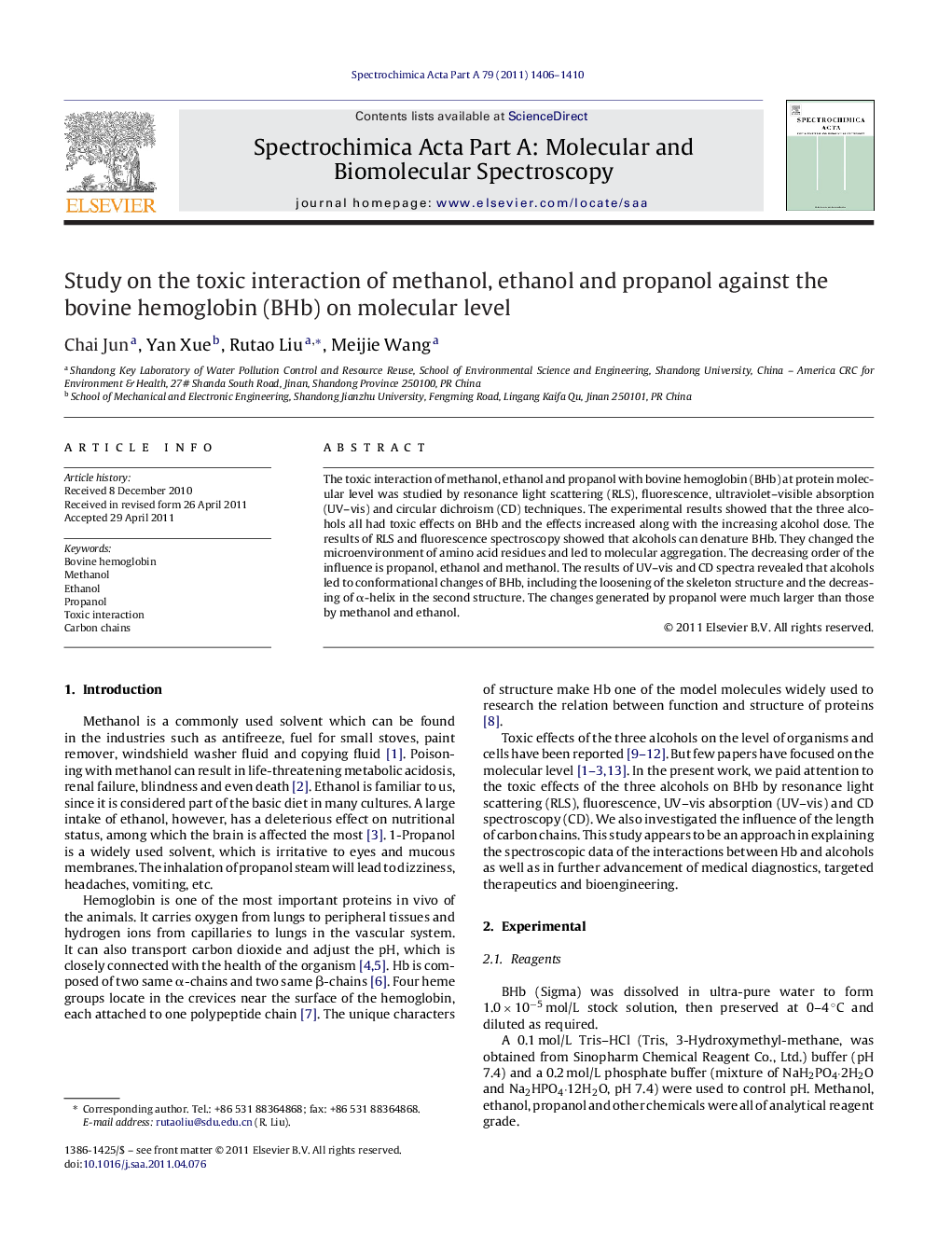| Article ID | Journal | Published Year | Pages | File Type |
|---|---|---|---|---|
| 1236539 | Spectrochimica Acta Part A: Molecular and Biomolecular Spectroscopy | 2011 | 5 Pages |
The toxic interaction of methanol, ethanol and propanol with bovine hemoglobin (BHb) at protein molecular level was studied by resonance light scattering (RLS), fluorescence, ultraviolet–visible absorption (UV–vis) and circular dichroism (CD) techniques. The experimental results showed that the three alcohols all had toxic effects on BHb and the effects increased along with the increasing alcohol dose. The results of RLS and fluorescence spectroscopy showed that alcohols can denature BHb. They changed the microenvironment of amino acid residues and led to molecular aggregation. The decreasing order of the influence is propanol, ethanol and methanol. The results of UV–vis and CD spectra revealed that alcohols led to conformational changes of BHb, including the loosening of the skeleton structure and the decreasing of α-helix in the second structure. The changes generated by propanol were much larger than those by methanol and ethanol.
Graphical abstractWith the adding of alcohol, the Trp residues buried were exposed, leading to the fluorescence quenching. Meanwhile, the BHb molecules were denatured and aggregated to wrap the Trp residues up, resulting in the fluorescence intensity increasing. The two opposite effects competed and at last, the intensity increased.Figure optionsDownload full-size imageDownload as PowerPoint slideHighlights► The interaction of methanol, ethanol and propanol with bovine hemoglobin was investigated. ► Toxic effects of the three alcohols increased along with the alcohol dose. ► The degeneration level of BHb is related to the length of carbon chain of alcohol. ► The decreasing order of the influence is propanol, ethanol and methanol.
